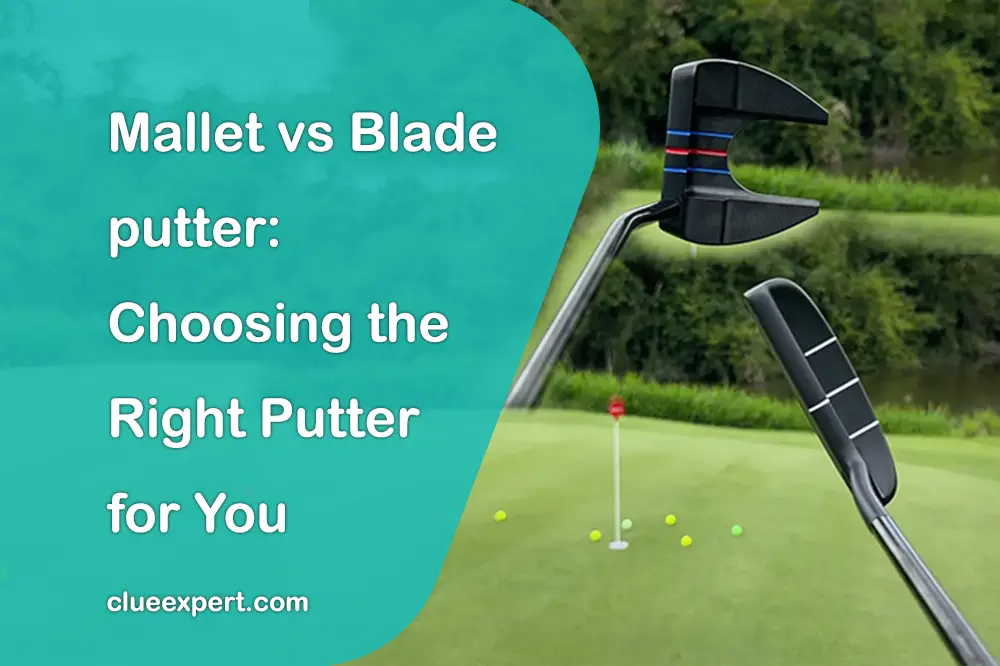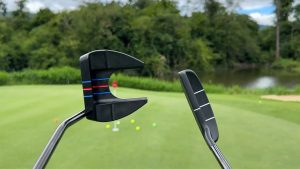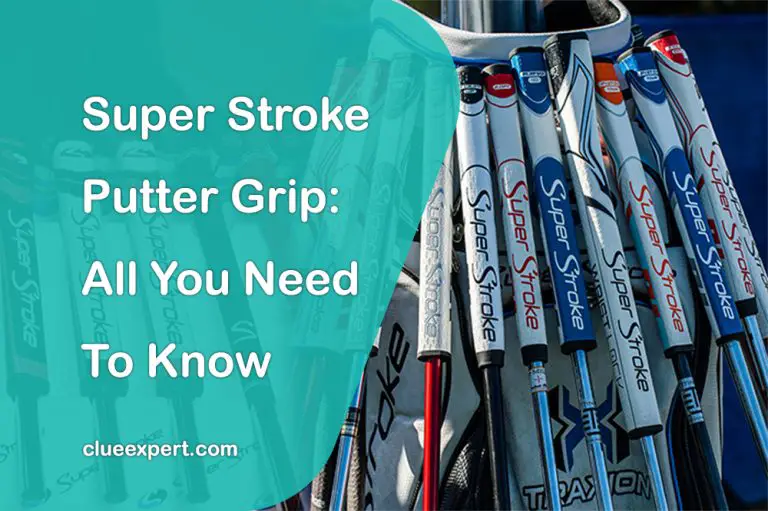In the world of golf, few decisions carry as much weight as choosing the right putter. Among the myriad options available to golfers, two primary styles stand out: mallet putters and blade putters. Each offers its own set of characteristics and benefits, making the choice between them a crucial one for golfers of all skill levels.
What are mallet putters and blade putters?
Mallet Putters: These putters are characterized by their larger, more substantial heads, often featuring intricate designs and alignment aids. The weight distribution in mallet putters is typically more evenly spread throughout the head, offering stability and forgiveness on off-center strikes.
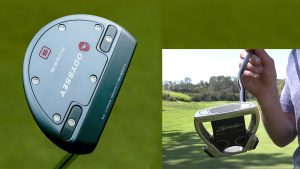
Blade Putters: In contrast, blade putters are known for their slim, streamlined profiles reminiscent of traditional putter designs. They offer a classic look and feel preferred by many golf purists, with a focus on precision and control.
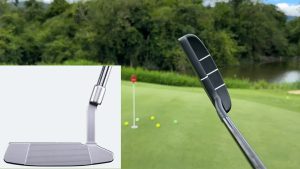
Why is the choice between mallet and blade putters crucial for golfers?
The decision between mallet and blade putters is crucial for golfers because it directly impacts their performance on the green. Each style offers distinct advantages and disadvantages that can significantly influence a golfer’s putting game.
Mallet putters, with their larger heads and alignment aids, excel at providing stability and forgiveness, particularly on shorter putts where accuracy is paramount. On the other hand, blade putters offer precision and feedback, allowing golfers to better gauge the subtleties of their strokes.
Understanding the differences between these two styles is essential for golfers looking to optimize their putting performance. By selecting the putter that best suits their preferences and stroke tendencies, golfers can gain a competitive edge on the green and improve their overall scores.
Key Differences Between Mallet and Blade Putters
When it comes to choosing the right putter for your game, understanding the key differences between mallet and blade putters is essential.
What Defines a Mallet Putter?
Mallet putters are easily recognizable by their larger and more intricate head designs. Unlike blade putters, which have a more streamlined profile, mallet putters often feature a larger sweet spot and a higher moment of inertia (MOI), providing increased forgiveness on off-center strikes.
Shape, Design, and Weight Distribution: Mallet putters come in a variety of shapes and designs, ranging from traditional to modern. Their larger heads typically distribute weight around the perimeter, creating a more stable and forgiving putting experience.
Alignment Aids and Visual Features: One of the hallmarks of mallet putters is their incorporation of alignment aids and visual features. These can include sightlines, dots, or other markings on the putter head to help golfers align their putts more accurately.
Pros and Cons of Mallet Putters: Mallet putters offer excellent stability and forgiveness, making them ideal for golfers who struggle with consistency on the green. However, some golfers may find the larger head size of mallet putters less appealing or feel that they lack the precision of blade putters.
Characteristics of Blade Putters
Blade putters, also known as traditional putters, feature a slim profile and classic design that appeals to many golfers. While they may lack the forgiveness of mallet putters, blade putters offer precise feedback and control that some golfers prefer.
Slim Profile and Classic Design: Blade putters have a timeless look characterized by their slender, blade-like heads. This classic design is favored by golf traditionalists and purists who appreciate the simplicity and elegance of blade putters.
Feel and Feedback: One of the defining characteristics of blade putters is the feedback they provide to golfers upon impact. Because of their smaller head size and weight distribution, golfers can better sense the quality of their strikes and make adjustments accordingly.
Precision and Control: Blade putters are prized for their precision and control, allowing golfers to execute delicate putts with accuracy and confidence. While they may require more skill to wield effectively, blade putters offer a level of finesse that many golfers find appealing.
Performance Comparison at Different Distances
When it comes to putting, the length of your putt can significantly impact your choice of putter and your overall performance on the green. Let’s explore how mallet and blade putters stack up at various distances.
Short Putts (Five Feet)
Short putts, typically around five feet in length, are crucial for scoring well on the golf course. Here’s how mallet putters fare from close range:
How do mallet putters perform from close range? Mallet putters excel at short putts due to their larger sweet spot and higher moment of inertia (MOI). This increased forgiveness allows golfers to make more consistent contact with the ball, resulting in improved accuracy and fewer mishits.
Advantages and Drawbacks: The main advantage of using a mallet putter for short putts is its forgiveness, which can help golfers sink more putts and lower their scores. However, some golfers may find the larger head size of mallet putters less maneuverable or prefer the feel of a blade putter for shorter distances.
Medium-Length Putts (Ten Feet)
Medium-length putts, typically around ten feet in length, require a delicate touch and precise control. Here’s how blade putters perform at this distance:
Blade putters’ effectiveness at the 10-foot distance: Blade putters are renowned for their precision and control, making them well-suited for medium-length putts. Their slim profile and classic design allow golfers to execute smooth, accurate strokes with confidence.
Factors Influencing Performance: When using a blade putter for medium-length putts, factors such as green speed, slope, and golfer technique can influence performance. Proper alignment and a consistent putting stroke are essential for success on putts of this distance.
Long Putts (Twenty Feet)
Long putts, typically around twenty feet in length or more, require a combination of power, touch, and distance control. Here’s why blade-style putters are often preferred for long-range putts:
Why are blade-style putters preferred for long-range putts? Blade putters offer superior distance control and consistency on long putts due to their precision and feedback. Golfers can better gauge the speed and break of the green with a blade putter, allowing for more accurate lag putts and fewer three-putts.
Consistency and Distance Control: The feedback provided by a blade putter allows golfers to adjust their stroke and speed accordingly, leading to more consistent results on long putts. Additionally, the ability to feel the ball contact the putter face helps golfers maintain control over distance, reducing the likelihood of leaving long putts short or blasting them past the hole.
Choosing the Right Putter for Your Game
Selecting the perfect putter for your golf game involves considering various factors, including personal preferences, stroke type, custom fitting, and seeking professional advice. Let’s delve into each of these aspects to help you make an informed decision.
Personal Preferences and Stroke Type
One of the first considerations when choosing a putter is your personal preference and stroke type. Some golfers prefer the look and feel of a traditional blade putter, while others may opt for the forgiveness and stability of a mallet putter. Your stroke type, whether it’s a straight-back, straight-through motion or an arcing stroke, can also influence your choice of putter. Experimenting with different putter styles and assessing how they feel during practice sessions can help you determine which putter aligns best with your preferences and stroke mechanics.
Importance of Custom Fitting
Custom fitting is essential for ensuring that your putter is tailored to your unique specifications and playing style. A professional club fitter can assess factors such as putter length, lie angle, loft, and grip size to optimize your putting performance. Custom fitting helps ensure that you have the correct setup and alignment at address, leading to improved consistency and accuracy on the greens. Investing in a custom fitting session can make a significant difference in your putting game and help you achieve better results on the course.
Seeking Professional Advice
Seeking professional advice from experienced golf instructors or club fitters can provide valuable insights into selecting the right putter for your game. These experts can offer personalized recommendations based on your swing characteristics, tendencies, and goals. Whether it’s a recommendation for a specific putter model, grip style, or fitting adjustments, professional advice can help you make informed decisions and maximize your putting performance. Additionally, working with a coach or instructor to fine-tune your putting technique can complement the equipment fitting process and lead to further improvements in your putting game.
Trends and Future Developments
As technology continues to advance in the world of golf equipment, putter design is no exception. Let’s explore some emerging trends and future developments that are shaping the landscape of putters.
Innovative Materials
Putter manufacturers are constantly experimenting with new materials to enhance performance and feel. While traditional materials like stainless steel remain popular, there is a growing trend towards lightweight alloys and composite materials. These materials offer benefits such as improved weight distribution, enhanced vibration dampening, and increased forgiveness. Carbon fiber, aluminum, and titanium are among the materials being used to create putters that are both lightweight and durable.
Face Inserts
Face inserts play a crucial role in the feel and performance of a putter. Manufacturers are exploring innovative face insert technologies to optimize roll and consistency on the greens. Some of the latest developments include milled face inserts with varying groove patterns to promote forward spin and reduce skidding. Thermoplastic elastomer (TPE) inserts are also being used to enhance feel and responsiveness at impact, providing golfers with a softer feel and improved feedback on their putts.
Alignment Aids
Alignment aids are essential for helping golfers set up correctly and align their putter to the target. Putter designers are incorporating advanced alignment features such as high-contrast sight lines, dual alignment dots, and visual aids to assist golfers in achieving proper alignment and aim. These alignment aids can improve confidence and accuracy on the greens, especially for golfers who struggle with alignment consistency.
Industry Innovations
The golf industry is witnessing several innovative developments in putter design aimed at improving performance and customization options for golfers. One notable trend is the rise of adjustable putters that allow golfers to customize parameters such as loft, lie angle, and weighting to suit their preferences and stroke characteristics. Additionally, advancements in 3D printing technology are enabling manufacturers to create putters with intricate designs and precise weight distribution for optimal performance.
Integration of Technology
The integration of technology into putter design is revolutionizing the way golfers analyze and improve their putting strokes. Smart putters equipped with sensors and tracking technology can provide real-time feedback on stroke mechanics, face angle, and impact dynamics. These insights allow golfers to identify areas for improvement and make data-driven adjustments to their putting technique, leading to better results on the course.
Conclusion: Mallet vs. Blade Putter
Recap of Mallet vs. Blade Putter
Mallet putters are known for their larger, more forgiving clubheads and often feature alignment aids and visual features to assist with aim and alignment. On the other hand, blade putters have a more traditional, slim profile and offer precise feedback and control on the greens.
When comparing performance at different distances, mallet putters tend to excel at short and medium-length putts, thanks to their enhanced forgiveness and stability. Blade putters, meanwhile, are preferred for long-range putts due to their precision and ability to control distance more effectively.
Personal preference and stroke type play a crucial role in choosing the right putter for your game. Golfers should consider factors such as the shape of their putting stroke, visual alignment preferences, and the feel they prefer at impact.
Encouragement to Explore Both Options
While the debate between mallet and blade putters may continue, it’s essential for golfers to explore both options and find what works best for their game. Trying out different putters on the practice green and getting properly fitted can help golfers make an informed decision.
There is no one-size-fits-all solution when it comes to putters, and what works for one golfer may not work for another. By experimenting with different styles and seeking professional advice, golfers can find a putter that suits their unique preferences and putting stroke.
Final Thoughts on Improving Your Putting Game
Improving your putting game requires practice, patience, and a willingness to experiment with different techniques and equipment. Whether you choose a mallet or blade putter, focusing on fundamentals such as alignment, tempo, and stroke consistency is key to sinking more putts on the course.
Additionally, seeking professional instruction and undergoing a custom fitting can provide valuable insights into your putting stroke and help you find the right equipment to optimize your performance on the greens.
In conclusion, the debate between mallet and blade putters will continue to rage on, but ultimately, the best putter for you is the one that inspires confidence and helps you hole more putts. By exploring both options and focusing on improving your putting fundamentals, you can elevate your game and lower your scores on the course. Happy putting!

